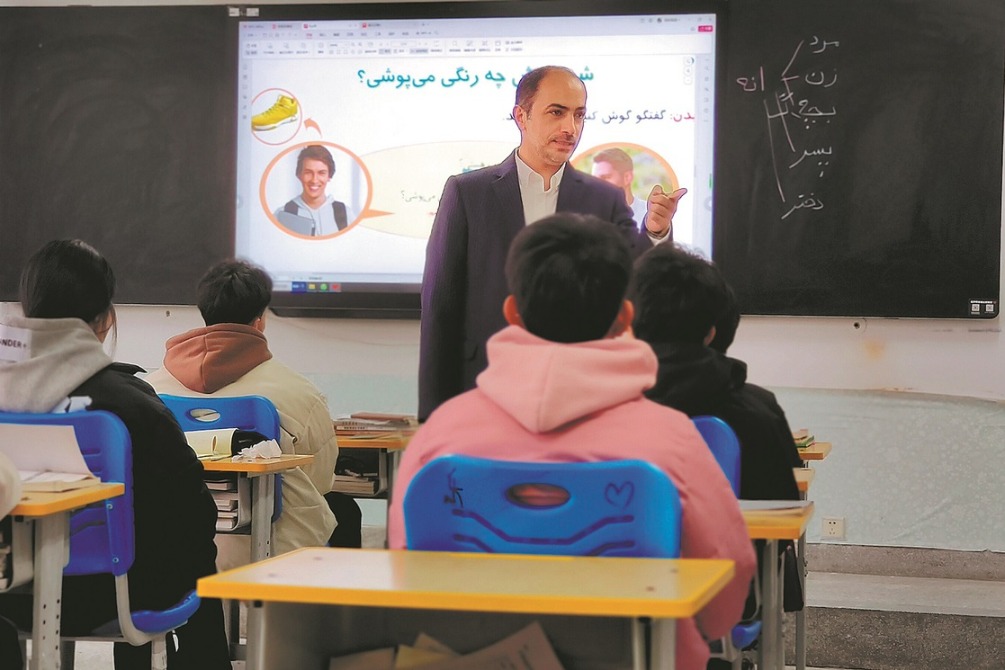$1.4b pledged for Horn of Africa drought relief, more still needed
By Edith Mutethya in Nairobi, Kenya | chinadaily.com.cn | Updated: 2022-04-27 17:41
Efforts to save the lives of more than 15 million severely food insecure people across Kenya, Ethiopia and Somalia due to climate-linked drought got a boost after donor agencies pledged nearly $1.4 billion.
The funds, pledged at a high-level roundtable in Geneva on Tuesday, will be used to provide urgent food, nutrition, cash and health assistance, as well as fodder and medicines to keep livestock alive.
However, non-governmental organizations are calling for increased funding to avert catastrophe, noting humanitarian partners need $4.4 billion to provide life-saving aid and protection to about 29.1 million people in Somalia, Ethiopia and Kenya this year.
In a statement ahead of the roundtable, over 50 non-governmental organizations and NGO networks said the Horn of Africa had not received a level of urgency like the people affected by the conflict in Ukraine.
"Not getting much-needed international attention and resources at a time of historic need in the Horn of Africa would result in the loss of thousands of lives a timely and at-scale response could have saved," said Heather Amstutz, Danish Refugee Council regional director for East Africa and the Great Lakes.
The organizations said a lack of attention has raised fears of acting too late, which happened in Somalia in 2011 when over 260,000 people died as a result of drought and famine.
The Horn of Africa is facing a fourth consecutive poor rainy season, which is already causing acute hunger and malnutrition, mass displacement, disease outbreaks and heightened protection risks for millions.
Already 1 million people have left their homes due to a lack of water or pasture, and at least 3 million livestock have died, the United Nations Office for the Coordination of Humanitarian Affairs said in a statement on Tuesday.
The situation has been exacerbated by conflicts in Ethiopia and Somalia, desert locust swarms and two years of pandemic-related socioeconomic stress.
Moreover, the Horn of Africa is also grappling with the impact of the Russia-Ukraine conflict, which is driving up the price of basic foods and other necessities, such as fuel and fertilizers.
"Once again, vulnerable people across the Horn of Africa are falling victim to the cruelty of acute hunger and potential famine in a crisis that is not of their own making," UN humanitarian chief Martin Griffiths said. "We must all step up and show the people of this region that we are here to help alleviate their suffering and that there is no place for famine in the twenty-first century."
In Somalia, the UN Office for the Coordination of Humanitarian Affairs said more than 6 million people are acutely food insecure, of which 81,000 are at catastrophic levels, while 1.4 million children are acutely malnourished.
Additionally, 90 percent of the country's districts are affected by drought and up to 90 percent of its water sources are drying up, including the Shabelle and Juba Rivers, which are at historic lows.
The drought has so far displaced 759,400 people in the country since early 2021, of which 500,000 were displaced between January and March this year.
In Ethiopia's Oromia, Southern Nations, Nationalities and Peoples', Southwest and Somali regions, a total of 6.5 million people are acutely food insecure. Additionally, 1.5 million livestock have died, destroying people's livelihoods.
At least 286,000 people in the Somali and Oromia regions have migrated in search of water, pasture or assistance.
In Kenya, 3.5 million people in the country's north and eastern arid and semi-arid lands are acutely food insecure.
In Mandera County, general acute malnutrition levels are over 34 percent and severe acute malnutrition levels are at 7.9 percent for children under the age of five, far surpassing emergency thresholds.
"Because of the drought, we are skipping meals. So I have to ration supper and divide meals so that some of my children who need additional food are able to eat more than others," Elizabeth Akaale, a mother of seven living in Kenya's Turkana County, told Save the Children, a leading humanitarian organization for children.
























